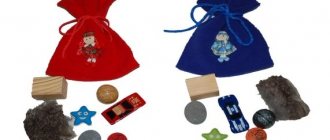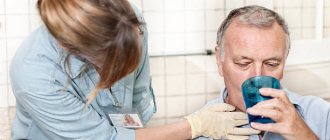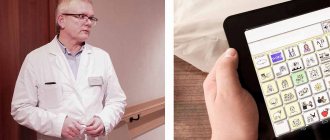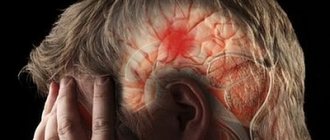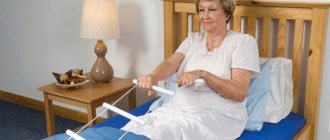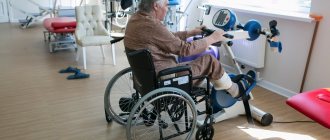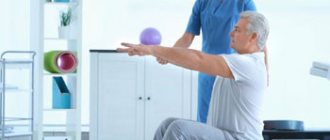Strokes are severe lesions of brain tissue caused by acute disorders of cerebral circulation. Against the background of prolonged spasm of the great vessels or their blockage, the ischemic form develops, and with rupture of the vascular wall and subsequent hemorrhage, the hemorrhagic form develops. In the first case, the symptoms may increase gradually, but in the second they always appear abruptly. At the same time, cerebrovascular insufficiency gives quite serious complications, one of them is paralysis and impaired fine motor skills after a stroke.
The recovery of such patients takes a very long time, but rehabilitation measures are needed as early as possible. And they need to be done under the supervision of experienced doctors. The specialists of the Verimed clinic will help the patient return to a full life.
What are fine motor skills?
Fine motor skills are clear, purposeful movements of the hands and fingers, controlled by the central nervous system. They are possible only with impeccably coordinated work of the brain, organs of vision and impulse-conducting nerves. There is an inextricable connection between motor activity and cognitive functions. Therefore, to fully restore fine motor skills after a stroke, not only the development of muscles and joints is required, but also exercises aimed at activating mental processes.
What exercises can be done to restore motor skills of the hands and fingers after a stroke?
If you approach this issue creatively and with soul, you can come up with a lot of exercises that will help restore fine motor skills. For example, you can sort through scattered beans, peas, small stones, untie knots on ropes, “play” the piano, chess, try to master beadwork, assemble puzzles or a construction set with small parts. Do not ignore or be afraid of sports (for example, Nordic walking).
Here are some other useful exercises for restoring fine motor skills after a stroke. It is better to start them with a healthy arm, because this allows you to increase the activity and intensity of the brain. The “difficulties of flight” must be overcome slowly, and all manipulations must be performed honestly and responsibly.
- Slowly clench your fingers into a fist, increase the pressure at the end of the action, and then gradually release it. It is advisable to concentrate on your actions and feel your every movement.
- Place your hands palms down either on the table or on your knees, with your fingers slightly spread. Raise your little fingers up and hold for a few seconds, do not move the other fingers. Then move on to the other fingers one by one.
- Let’s complicate the previous exercise: try to draw a circle simultaneously with two little fingers, first in one direction, then in the other direction. Repeat with other fingers.
General recommendations for the recovery period
The post-stroke condition requires great patience and diligence from the patient’s loved ones (and himself, of course). After the patient is discharged home, he will have to make a lot of efforts to recover and strictly follow all the doctors’ recommendations. He will be faced with difficult tasks, because he must be motivated to do hard work and understand exactly that all his actions will help eliminate involuntary muscle contraction, eliminate atrophy, restore normal blood circulation, restore mobility to the hands (fingers) and that, ultimately , he will be independent enough to look after himself.
At the same time, it is necessary to observe systematicity and consistency when practicing. A lot depends on the support and care of family and friends and their ability to delicately insist on rehabilitation exercises.
Doctors at the Sagan Dali Clinic, for the purpose of rehabilitation after a stroke, recommend taking herbal medicines that help with distortions of the face (eyes, mouth), eliminate the feeling of tightening of the fingers, numbness, stiffness, and “crawling goosebumps.” Tibetan herbal infusions are also good because they improve blood and lymph circulation, help conduct nerve impulses, lower blood pressure, and help restore brain damage.
But the most important thing, and this is emphasized by the doctors of the Sagan Dali clinic, in treatment after a stroke, is the will to live of the person who survived the stroke, his self-disposition, perception of life, positive identification with the outside world and understanding of his place in it. In fact, life after a stroke is not only sessions of reflexology, massage, educational rehabilitation classes, but the creation of a new philosophy, a philosophy of success and love of life. As Seneca said: “One of the conditions for recovery is the desire to get well.”
Symptoms of impaired hand motor skills after a stroke
Clinical signs of motor activity disorders are:
- a sharp decrease in muscle strength (until complete disappearance);
- rapid muscle fatigue;
- severe impairment of joint mobility due to contractures;
- impaired coordination of movements;
- reduction or loss of local sensitivity.
Mobility and coordination may be further affected by pain and tissue swelling.
What interferes with the recovery of motor skills after a stroke?
Improving the motor activity of the hands and restoring fine motor skills after acute cerebrovascular accidents is a rather complex process. It can be accelerated by the use of effective treatments, or it can be slowed down. The reasons for the slowdown (and sometimes impossibility) of rehabilitation may be:
- incorrect diagnosis;
- late treatment;
- serious disturbances in the nutrition of local tissues (circulatory disorders);
- injuries or chronic pathologies of nearby areas;
- depressive and apathetic states of the patient;
- other mental disorders.
How is motor skills restored?
Combating hand motor dysfunction after a stroke requires an integrated approach. It is important to start treatment as early as possible. Timely therapy gives a much greater chance of quickly achieving positive results.
Please note: It is important to remember that every day without training contributes to the formation of a stereotype of lack of movement in the central nervous system. The direct consequence is tissue trophic disorders; Muscle atrophy and bone decalcification develop.
The main methods for developing hand motor skills in the recovery period after a stroke are massage and gymnastic exercises. Hands and fingers contain a huge number of nerve endings. If there is not an adequate signal for movement from the central nervous system, it is important to direct it from the fingers to the brain. Local massage prescribed to patients helps restore the transmission of nerve impulses - the so-called. reflex arc. In addition, the physical effect on tissue helps to improve local blood flow (microcirculation) and, accordingly, improve tissue trophism. Thanks to professional massage, used in combination with other techniques, you can quickly restore the ability to make active, precise movements, as well as tactile sensitivity.
Another important point when restoring fine motor skills after a stroke is regular exercise. Such exercises serve to prevent further decline in motor activity, prevent the development of muscle and joint contractures and promote functional restoration. Regular classes under the guidance of doctors help patients after a stroke quickly adapt to living conditions. The possibility of complete self-care is one of the most important tasks of rehabilitation techniques.
All exercises must be performed with both hands synchronously. Usually the mobility of one of them is impaired, and symmetrical actions will significantly speed up recovery. The duration of gymnastics should be no more than 8-10 minutes per hour, so as not to develop significant fatigue. It is important to repeat the set of movements regularly in order to re-form the muscle reflex and motor stereotype.
Examples of exercises:
- Clench your fingers into a fist, increasing your efforts in the final phase of the movement. Slowly unclench them, trying to imagine the action of each muscle.
- Place your hands on a horizontal surface with your palms facing up. Spread your fingers a little. Raise your little fingers while trying to keep the other fingers still. Lock them in this position for 3-5 seconds and relax. Perform a similar exercise sequentially for all other fingers.
- Place your palms on the table in the same way as in the previous exercise. Alternately make circles (clockwise and counterclockwise) with raised fingers, starting with the little finger.
To develop fine motor skills when recovering from a stroke, it is useful to use available materials. An excellent effect can be achieved by such actions as sorting through cereals, modeling from plasticine, fastening buttons and tying knots in a rope.
How long does it take to recover fine motor skills after a stroke?
This question interests everyone who has suffered a stroke, as well as their loved ones. From the point of view of Tibetan medicine, the recovery time depends on the age characteristics of the person, the presence or absence of concomitant diseases, on belonging to one of the constitutional constitutions - “wind” (sanguine), “bile” (choleric), “mucus” (phlegmatic), what lifestyle and diet adhered to before illness, etc. The duration of rehabilitation after a stroke depends on a combination of various causes, so the treatment program is based on the individual characteristics of the patient. The main indicators that influence the length of the recovery period include:
- Side of the brain affected
- Level of brain tissue damage
- Efficiency and competence of medical actions taken
- The correctness of the techniques, medications, etc. used.
If a small area of the brain is damaged, the recovery time will be relatively short, but if doctors detect extensive damage, recovery can last for several years.
Restoring hand motor skills after a stroke using classical methods
Today, modern medicine has very effective methods of restorative treatment and rehabilitation of patients after a stroke. There is no point in listing them, since there are many of them. General strengthening and special programs for classical massage and physical therapy have been developed and are used, which include exercises to restore fine motor skills of the hands, muscle tone, reduce the degree of paresis, and eliminate pathological friendly movements.
Modern technologies are used that allow the return of various functions. For example, to develop lost fine motor skills, constructors and finger training simulators have been invented, when the patient inserts his hand into a special cuff and plays a computer game using a joystick, and the machine itself increases or decreases the resistance of the simulator. Exercises for restoring fine motor skills after a stroke include “finger games” and exercises, as we have already said, on specialized training devices and boards with various kinds of locks, latches, latches, etc.
There is also a software and hardware complex called SCENAR, which studies the passage of electromagnetic pulses and offers reflex points on the meridians to restore lost functions. At the same time, the “doctor” SCENAR follows the instructions of the program to install the electrode on the affected areas.
An important role in restoring fine motor skills of the hands after a stroke is played by therapeutic physical education (PT), which helps improve joint mobility, strengthen muscles, restore the functions of the hand and fingers, accustoms people to living conditions, and the ability to self-care.
Doctors of both modern Western medicine and Eastern medicine focus on starting to work on fine motor skills after a stroke as early as possible, without wasting time. This point is really important because it determines how quickly the recovery will occur. At the same time, both the patient and relatives must clearly understand that the development of fine motor skills after a stroke will directly affect brain function.
The influence of psychological attitude in the development of hand motor skills
A stroke often becomes a real tragedy for both the patient and his family. Brain damage provokes a decrease in mental activity and emotional lability. The patient can, as it were, “give up” on himself; he develops indifference, periodically replaced by outbursts of irritability and even anger. Apathy can be so great that a person does not want to do any exercises, try to get up, or move in any way.
To the objective reasons for the decrease in psychological activity are added internal experiences caused by a change in the usual lifestyle, the inability to look after oneself, and make some kind of global decisions. Immobility, isolation, fear of becoming a burden, fear of the future turn an active and freedom-loving person just yesterday into a completely weak-willed and apathetic one. He loses faith in his own strength, the possibility of developing hand motor skills and returning to his former life. Against this background, depression may appear, which will only worsen the situation. Such a person definitely needs not only the moral support of family and friends, but also the help of a doctor.
The experience of psychologists and psychiatrists allows us to quickly and accurately determine the root of the existing problem and find the “key” to both the patient himself and his relatives. Specialists will select the correct treatment regimen that will help motivate the patient to perform the necessary exercises, eliminating the main manifestations of apathy, depression and other mental disorders. And with faith in a speedy recovery, the restoration of fine motor skills of the hands after a stroke will go much faster.
Don't let a decadent mood ruin your future life - just call us now!
Training fine motor skills of the hands when restoring a bedridden patient
Gavrilkina Oksana Sergeevna Chief rehabilitation doctor, physical therapy and sports medicine doctor,
More about the doctor
When it comes to fine motor skills , people usually think of infants or preschool-aged children. However, there are several other categories of people who need to perform simple exercises that restore the mobility of the joints of the hand, fingers, and feet. These include:
- children born with cerebral palsy;
- patients who have had a stroke;
- elderly people (over 65 years old);
- bedridden patients, regardless of the disease history.
All joints and muscles of the body, regardless of their size and location, need constant movement. With forced inactivity, muscle tone is quickly lost, finger sensitivity decreases, and joint mobility decreases. This can lead to complete atrophy of the limb.
Ways to develop fine motor skills of the hands.
There are several ways to improve and restore the motor activity of the joints of the hands and fingers. These may include interaction with other people and the use of mechanical devices. For example:
- massage;
- sorting, pouring small objects;
- exercises using rings and balls that are placed on tripods;
- exercises with horizontal bars, rings.
Features of improving fine motor skills of the hands in bedridden patients.
The main problem that people face when caring for patients who cannot get out of bed is the patient’s deterioration in the ability to move, apathy, and deterioration in the quality of speech . All this is due to the weakness of the muscular system due to forced long-term inactivity. This condition is especially dangerous for older people, in whom complete muscle atrophy can occur within a month after the start of bed rest.
The patient’s intelligible speech is also associated with the motor activity of the fingers and hands. Understanding and reproducing words directly depends on motor impulses arising in the upper limbs. With regular training of fine motor skills of the fingers, a significant improvement in the patient’s speech quality can be achieved, which is very important for bedridden patients who have suffered a stroke .
An even bigger problem may be the patient's reluctance to do the exercises. Here tasks in the form of a game with poetry or musical accompaniment will help.
Exercises to develop fine motor skills of the hands
If a bedridden patient is able to independently engage in creative activities such as knitting, embroidery or drawing , these are the best methods for maintaining finger motor skills at the desired level. But often bedridden patients need simpler exercises that can be done independently or under the supervision of a caregiver. Some of them:
- Alternately clenching into a fist and straightening your fingers;
- Rubbing your palms together in a circular motion;
- Consecutive flexion, extension of fingers;
- Rolling a glass or metal ball in the palms;
- Sprinkling fine sand with your hands;
- Separating objects of different shapes and sizes into categories (sorting peas, beans, buckwheat mixed into one pile is good);
- Grabbing moderately heavy objects (books, glasses, water bottles), lifting an object held in the hand 20-30 cm above a horizontal surface;
- Attaching/removing clothespins from rope or wire;
- Rubbing your palms with hand skin cream (especially suitable for women of any age);
- Modeling from plasticine or soft clay.
Mechanical devices for the development of lost fine motor skills of the hands
The medical industry offers many options for devices that help bedridden patients during the rehabilitation period to improve the quality of life. The simplest of them are inserts made of wool or foam rubber, by squeezing them in the hand, the patient reduces muscle spasm and performs an independent massage of the palm and fingers. Pyramids like those for children are also very popular; they not only stimulate the work of the small joints of the hand, but also restore the usually impaired color perception. There are combined devices that include elements of a pyramid, expanders for compression, containers with small balls for sorting and massage.
Needle applicators have also proven themselves to be excellent, affecting sensitive points on the patient’s palm and improving blood circulation in the extremities, which is also important for the normal functioning of the joints and muscles of the hand.
